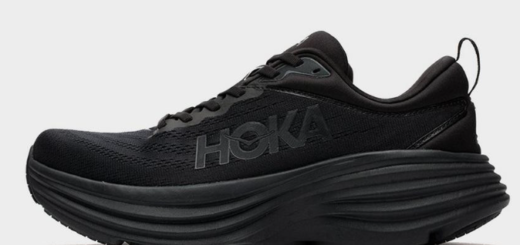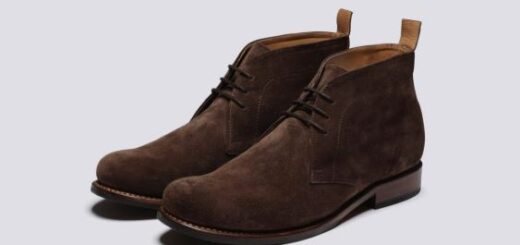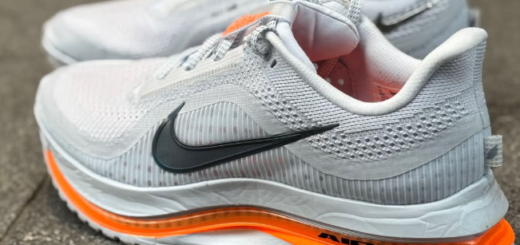The Best Shoes for Healthcare Professionals: Comfort, Support, and Performance in Every Step
Healthcare professionals spend long hours on their feet, moving quickly between patients and departments. This makes supportive and comfortable footwear not just a preference but a necessity. With demands like extended shifts, slippery floors, and fatigue management, choosing the right pair of shoes can significantly impact a nurse’s daily comfort and long-term health. Below is a detailed guide to some of the best nursing shoes available today, including options tailored for cushioning, arch support, lightweight wear, and slip resistance.
Best for All-Day Cushioning: Brooks Ghost Max 2
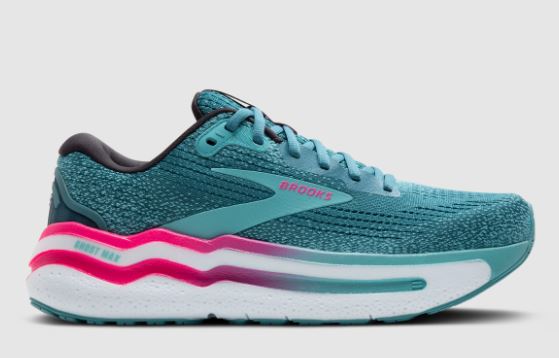
The Brooks Ghost Max 2 stands out for nurses needing serious shock absorption during long shifts. With a towering stack height of 39.0 mm at the heel and 29.1 mm at the forefoot, this shoe delivers plush cushioning without compromising stability. A balanced 20.6 HA midsole firmness ensures that each step feels soft, yet secure.
The wide platform underfoot, Performance in Every Step
measuring 118.7 mm in the forefoot and 99.3 mm in the heel, adds lateral stability. Its breathable upper scored a 5/5 in lab-based ventilation tests, ensuring feet stay cool even during 12-hour shifts. While the shoe is slightly heavier at 10.8 oz (305g), its energy-returning design helps reduce foot fatigue throughout the day.
Pros:
- Plush, stable cushioning
- Excellent breathability
- Supportive for long shifts
- Great for walking and light jogging
Cons:
- A bit heavy
- Foam could be softer
- Non-gusseted tongue
Best for Arch Support: Hoka Gaviota 5
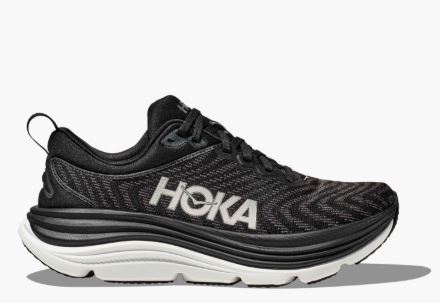
For nurses who need excellent arch support, the Hoka Gaviota 5 is a top contender. It combines maximum stability with luxurious cushioning. The shoe integrates an internal H-Frame that keeps feet properly aligned, supported by a dual-density midsole system. The soft primary foam reads 12.9 HA on the durometer, while a firmer 22.0 HA foam in the heel and arch ensures support where it’s most needed.
The shoe’s base width is exceptionally wide—125.1 mm in the forefoot and 106.6 mm in the heel—providing rock-solid stability. Breathability is another strong suit, earning a perfect 5/5 in lab testing. However, the low 2.2 mm drop may not be ideal for heel strikers or individuals with Achilles sensitivity.
Pros:
- Outstanding arch and heel support
- Breathable and comfortable upper
- Plush yet stable ride
- Ideal for wide feet
Cons:
- Low drop not ideal for all foot types
- Loses cushioning performance in colder weather
- Less suited for narrow feet
Best Lightweight Shoe: On Cloudtilt
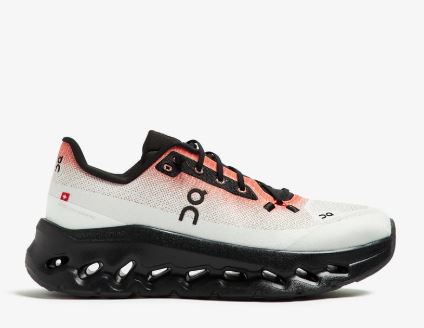
If your priority is lightweight comfort with solid cushioning, the On Cloudtilt is a fantastic option. Weighing just 9.4 oz (266g), it’s lighter than most comparable shoes. Despite its weight, it features ample cushioning with a stack height of 35.5 mm at the heel and 26.8 mm at the forefoot. CloudTec pods and Helion foam work together to soften each step and deliver energy return.
This model also includes a wide platform (117.7 mm forefoot/96.7 mm heel) for added stability. The outsole durability stood out in lab tests, with only 0.6 mm wear after Dremel testing, well below the 1.4 mm average. While breathability is limited (2/5), its overall comfort and durability make it an excellent choice for nurses on the move.
Pros:
- Lightweight and airy
- Soft, cushioned ride
- Highly durable outsole
- Eco-friendly materials
Cons:
- Subpar breathability
- Thin inner lining
Best Slip-Resistant Option: Hoka Bondi SR
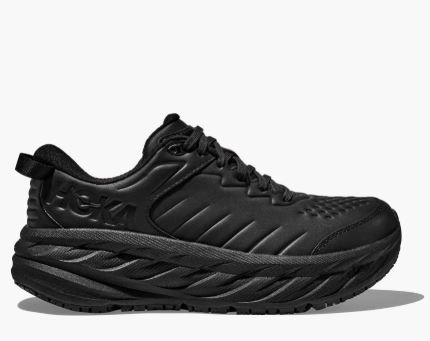
When working on slick hospital floors, the Hoka Bondi SR provides superior grip and cushioning. It features a midsole softness of 20.4 HA, offering plush comfort across long hours. The slip-resistant outsole was confirmed in lab testing with a durometer score of 73.1 HC, softer than average for better floor adhesion.
This shoe includes a water-resistant leather upper, which keeps moisture out but also limits ventilation. At 10.7 oz, it is heavier and bulkier than most sneakers, but the cushioning and grip make it ideal for those who prioritize stability and all-day comfort.
Pros:
- Excellent slip resistance
- Water-resistant upper
- High cushioning levels
- Roomy toebox
Cons:
- Heavy and less breathable
- Not suited for hot climates
Also Worth Considering
Skechers Go Walk 5 True
A slip-on option known for its ease of wear and flexible cushioning. The breathable mesh upper and lightweight build make it great for nurses who prefer hassle-free comfort.
Asics Gel-Venture 9
This shoe offers high-impact gel cushioning at an affordable price point. Nurses appreciate its stable ride and solid traction, even after long hours of wear.
Brooks Ghost 16
Building on the success of the Ghost Max 2, the Ghost 16 delivers similar cushioning benefits with slightly reduced weight. It’s well-regarded by nurses for offering a balanced ride that eases foot strain.
Crocs Mercy Professional Clogs
Highly favored in clinical settings, these slip-resistant clogs offer waterproof protection and are easy to clean. They use Croslite foam to provide step-in comfort and long-term durability.
Comparison Table
| Shoe | Key Strength | Cushioning Level | Support Type | Breathability |
|---|---|---|---|---|
| Brooks Ghost Max 2 | All-day comfort | High | Stable, soft | Excellent |
| Hoka Gaviota 5 | Arch support | High | Firm arch stability | Excellent |
| On Cloudtilt | Lightweight comfort | Medium-high | Balanced stability | Low |
| Hoka Bondi SR | Slip resistance | High | Firm and plush | Poor |
| Skechers Go Walk 5 | Slip-on convenience | Medium | Flexible | High |
| Asics Gel-Venture 9 | Budget-friendly | Medium-high | Structured | Medium |
| Brooks Ghost 16 | Balanced ride | High | Neutral | High |
| Crocs Mercy Clogs | Waterproof & durable | Foam-based | Moderate support | Medium |
Final Thoughts
Whether you’re standing, walking, or sprinting through hospital corridors, the right pair of shoes can ease fatigue, prevent injury, and enhance your focus on patient care. From ultra-cushioned trainers to slip-resistant clogs, today’s market offers specialized shoes to meet the diverse needs of healthcare workers.
Nurses are encouraged to choose footwear based on their specific shift demands, foot type, and work environment. Rotating between two well-fitting pairs and pairing them with quality socks can further protect foot health and extend the life of each pair.
Investing in quality footwear isn’t a luxury for nurses—it’s a professional necessity.
FAQs
What Are the Most Comfortable Shoes for Nurses?
The Brooks Ghost Max 2 is highly rated for comfort due to its plush cushioning and excellent breathability, making it ideal for long hospital shifts.
Which Nursing Shoes Provide the Best Arch Support?
The Hoka Gaviota 5 stands out for arch support, thanks to its dual-density midsole and internal H-Frame for foot alignment.
Are There Good Lightweight Options for Nurses?
Yes, the On Cloudtilt is a great lightweight option that offers comfort, cushioning, and durability without added bulk.
What Shoes Are Best for Slippery Hospital Floors?
The Hoka Bondi SR features a lab-tested slip-resistant outsole and water-resistant leather upper, making it ideal for slick environments.
Are Slip-On Shoes Suitable for Nurses?
Slip-on models like the Skechers Go Walk 5 offer flexibility and ease, making them a practical choice for nurses seeking comfort and convenience.

